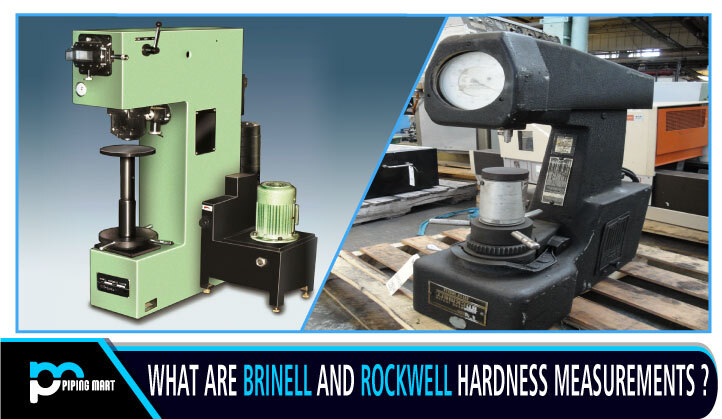Various sorts of tests were developed to assess the physical characteristics of metals. Tensile tests are used to determine strength, impact testing is used to determine toughness, and bend tests are used to determine ductility. But how can you measure the strength of a metal alloy? Two of the most popular forms of hardness testing are covered in this article: the hardness tests of Brinell and the hardness tests of Rockwell.
What is Metal Hardness?
The capacity of a metal or metal alloy to resist plastic deformation in a specific, localized region rather than a general location is described as hardness. It’s also the resistance of a metal to indentation, scratching, or abrasion.
Hardness is an essential characteristic since a metal’s capacity to resist wear is directly proportional to its hardness. Within a particular kind of metal, hardness levels might vary based on alloying elements, heat treatment, work hardening, and other hardening processes utilized.
Because of the diversity in hardness among metals and even within a family of metals, methods for measuring hardness such as Brinell hardness and Rockwell hardness were developed to provide a common understanding of hardness levels.
What is Brinell hardness?
Brinell hardness is a scale that assigns a numerical value to a material’s level of hardness. ASTM E10 specifies the procedure for performing a Brinell hardness test in detail. A certified Brinell indenter is pushed against a metal under a specified load for a predetermined length of time to conduct the test. All of this is described in order to limit the possibility of experiment technique variation impacting findings. For steels and other comparable materials, the indenter is typically a 10mm hardened steel ball with a force of 3,000 kg.
The test varies somewhat depending on whether the material is softer or tougher. After applying stress to the metal, the indenter is withdrawn and the breadth of the resulting indentation is measured with a microscope. A Brinell hardness scale may then be used to translate the indentation measurement into a Brinell hardness value.
What is Rockwell Hardness?
Rockwell’s hardness is similar to Brinell hardness it is used to determine the numerical hardness of a material. A Rockwell hardness test and a Rockwell hardness scale are used to accomplishing this. ASTM E18 specifies the specific procedure. Rockwell hardness tests, like Brinell hardness tests, use an indenter of a given size applied with a predetermined force for a certain period of time. Using a Rockwell hardness scale, the indentation measurement is converted to a Rockwell hardness value.
What is the Difference between Rockwell and Brinell Tests?
While the two tests have similarities, there are several important differences, listed below:
Depending on the material being evaluated, the Brinell test utilizes a 10mm hardened steel ball, whereas the Rockwell test uses either a 4mm steel ball or a diamond cone.
The Rockwell test determines the depth of the indentation, whereas the Brinell test determines its width. A preload is used in Rockwell hardness testing to create a zero position before the main load is applied. The primary load is then removed, leaving just the preload. The Rockwell testing equipment then measures the distance traveled.
It’s also worth noting that the conversion scales for Rockwell and Brinell hardness are not the same and should not be used interchangeably.
Where are Brinell and Rockwell Hardness Tests Used?
Almost every industry uses the Brinell and Rockwell hardness tests. They’re important for determining whether metals and other materials will withstand indentation, abrasion, scratching, and other kinds of wear in a specific application. Materials for engine pistons, jet turbine blades, ship hulls, bronze fixturing equipment, railcar wheels, and many other components that may be exposed to wear conditions are just a few examples.

Pipingmart is B2B portal specializes in industrial, metal and piping products. Also, share latest information and news related to products, materials and different types grades to help business dealing in this industry.



